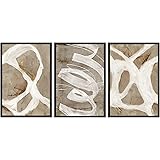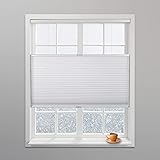The ceiling, often overlooked, is being increasingly recognized as a pivotal element in modern home interiors. This architectural component is now considered a vital tool for redefining spaces, elevating mood, and integrating smart technology. As the accompanying video effectively illustrates, false ceilings are no longer merely functional but have transitioned into essential design features, capable of transforming the very essence of a room. For those embarking on a new build, a significant renovation, or simply seeking fresh inspiration, understanding the current trends in modern false ceiling designs is paramount.
In 2025, the possibilities for false ceiling design ideas are expansive, moving far beyond flat, uninspired panels. These innovative structures are actively reshaping how spaces are perceived and experienced, offering both aesthetic appeal and practical benefits. Designers are leveraging advanced materials and integrated technology to craft environments that are both beautiful and highly functional. The strategic application of these designs can significantly enhance the architectural narrative of any home, ensuring that overhead elements contribute meaningfully to the overall design scheme.
Evolving Forms and Creative Dimensions in Modern False Ceiling Designs
The conventional notion of a ceiling has been dramatically reimagined, giving way to forms that exude fluidity, layering, and intricate dimensionality. Flat surfaces are being replaced by dynamic structures that introduce movement and energy into a room. Recessed trays, for instance, are being designed with soft, undulating curves that flow seamlessly across the expanse, creating a visually captivating effect. This approach ensures that the ceiling itself becomes a sculptural element, drawing the eye upward and contributing to a sophisticated aesthetic.
A prominent trend gaining considerable traction is the floating panel look, where a central ceiling section appears to hover just below the main structural surface. This illusion is often accentuated with delicate, concealed lighting that lends a futuristic and ethereal quality to the space. Such designs are not merely decorative; they actively reconfigure the experience of a room, adding a contemporary edge. Imagine if a living area could be transformed by a ceiling that seems to defy gravity, casting a soft, ambient glow that enhances relaxation or social interaction.
Reinventing Classic Coffered Layouts
While traditional coffered ceilings have long been associated with ornate, heavy wood, contemporary interpretations are introducing a fresh, minimalist elegance. The modern approach involves clean-lined gypsum or matte MDF, replacing the conventional bulky wood and intricate trim. These updated coffered designs create sleek, architectural grids that are often painted in refined monochrome palettes, such as a sophisticated Dove Gray or a dramatic deep charcoal. This method provides a polished finish without the perceived heaviness of older styles, making them suitable for a broader range of modern interiors.
The transformation of coffered ceilings highlights a shift towards integrating classic elements with a contemporary sensibility. Imagine a dining room where a geometric coffered ceiling in a muted tone adds a sense of structure and grandeur, yet feels entirely current. This reinterpretation ensures that classic design principles can be adapted to suit modern tastes and material capabilities, offering a versatile solution for adding depth and character. The clean lines and monochromatic finishes allow these ceilings to complement diverse interior styles, from industrial chic to refined minimalist.
Innovative Materials for Contemporary Ceilings
The selection of materials is crucial in elevating false ceiling designs, influencing both their aesthetic and functional attributes. Gypsum, with its inherent flexibility and lightweight properties, continues to be a favored choice among designers. However, the true innovation lies in the strategic combination of materials, creating unique textures and visual interest that enhance the overall design narrative. This amalgamation allows for a richer sensory experience within a space, moving beyond a single material application.
Wood is experiencing a significant resurgence, though its application has been thoroughly modernized. Gone are the days of rustic beams and traditional planks; the focus is now on sleek veneer panels and finely slatted finishes. These elements, typically in rich tones such as walnut, oak, or ash, introduce natural warmth, texture, and depth into interior spaces. They are being seamlessly integrated into various rooms, including living areas, dining spaces, and even bathrooms, where they contribute to a spa-like and serene ambiance. Consider a bedroom ceiling featuring a subtle wood veneer, imbuing the space with an organic, calming presence.
Integrating Metallic Accents
Metal, a material traditionally used sparingly overhead, is now being subtly yet strikingly woven into ceiling designs. Designers are employing brushed gold trims to outline recessed areas, or incorporating matte black bands that slice across floating panels, adding a distinctive urban edge. Perforated metallic insets are also being utilized, providing a unique textural dimension and a contemporary industrial feel. These metallic touches, when thoughtfully paired with indirect lighting, can evoke a sense of luxury, modernism, or an incredibly unique aesthetic, depending on their application.
The versatility of metal allows for a broad spectrum of design expressions, from understated elegance to bold statements. Imagine a home office where a brushed bronze trim around a perimeter soffit catches the light, adding a touch of sophisticated glamour without overwhelming the space. This strategic use of metallic elements demonstrates a refined understanding of material interplay, enabling designers to craft ceilings that are both visually captivating and exceptionally unique. The reflective qualities of metal can also contribute to the perception of increased light and spaciousness within a room.
The Art of Lighting Integration for False Ceilings
Exceptional lighting is undeniably fundamental to maximizing the impact of any beautifully designed ceiling. A meticulously crafted false ceiling without an equally considered lighting scheme represents a significant missed opportunity to enhance the spatial experience. In contemporary design, lighting is no longer an afterthought but an integral component, meticulously planned and built into the design from its very inception. This proactive approach ensures a harmonious relationship between the ceiling structure and its illumination.
Recessed lighting maintains its popularity due to its unobtrusive and clean aesthetic, providing illumination without visual clutter. However, the true artistry lies in its strategic arrangement, moving beyond simple uniform grids. Asymmetrical spotlights, staggered rows, and cleverly zoned pools of light are employed to sculpt the space from above, highlighting architectural features or creating specific focal points. Imagine a living room where precisely placed recessed lights accentuate a textured wall or a piece of art, thereby transforming the ambiance and guiding the eye.
Hidden Lighting Solutions for Ambient Glow
The current trend heavily favors hidden lighting, which creates a soft, ambient glow that enhances comfort and atmosphere. Cove lighting, implemented with discreet LED strips tucked into the edges of trays or layered drops, allows light to wash gently across the ceiling and down the adjacent walls. This technique produces a warm, modern, and far more atmospheric effect than a singular overhead fixture, contributing to a sense of serenity and coziness. The diffused nature of cove lighting minimizes harsh shadows, promoting a more inviting environment.
An even newer advancement in lighting technology involves color-changing LEDs, which offer unparalleled control over the room’s mood. These smart lighting systems can be managed via a smartphone, allowing inhabitants to effortlessly switch between cool daylight tones for focused work and a cozy amber hue for a relaxed movie night. This integration of style and functionality exemplifies the sophisticated interplay between technology and design, empowering homeowners to personalize their environment dynamically. The ability to shift colors dynamically provides incredible flexibility for various activities and times of day.
Texture and Finish: The Ceiling as a Canvas
False ceilings are increasingly being viewed as blank canvases for artistic expression, with texture playing a pivotal role in weaving them into the overall narrative of a room. The era of uniformly smooth surfaces is giving way to sculpted designs, geometric reliefs, and dynamic 3D panels that alter their appearance in response to changing light. Even a minimalist room can be profoundly elevated by a textured ceiling, which naturally draws the gaze upward and introduces a depth that might otherwise be absent.
Consider a hallway where a gypsum wave pattern on the ceiling creates a dynamic visual flow, guiding visitors through the space. These tactile and visual elements contribute significantly to the sensory richness of an interior, making the ceiling a more engaging part of the design. The interplay of light and shadow on these textured surfaces adds another layer of complexity, making the ceiling a continually evolving visual feature. This approach allows for subtle yet impactful statements that resonate throughout the entire room.
Sophisticated Ceiling Finishes and Mixed Textures
The evolution of ceiling finishes further contributes to their design versatility. Matte textures remain a preferred choice for achieving a soft, diffused look that minimizes glare and creates a calming atmosphere. In contrast, high-gloss finishes are increasingly making their way into modern interiors, reflecting light to visually expand the space and introduce a hint of glamour without appearing ostentatious. This reflective quality can be particularly effective in smaller rooms or areas with limited natural light, creating an illusion of greater height and breadth.
An advanced design strategy involves the mixing of finishes, such as a matte center complemented by a high-gloss perimeter. This technique establishes a visual rhythm and a layered effect that feels both intentional and sophisticated. Imagine a dining area where a central matte panel diffuses light softly, while a surrounding glossy band subtly reflects the room’s elements, creating a dynamic visual interplay. This thoughtful combination of finishes allows for customized effects that cater to specific aesthetic goals and functional requirements, ensuring that every ceiling contributes to a carefully curated environment.
Zoning with False Ceilings in Open-Concept Spaces
In contemporary open-concept homes, where traditional walls are minimized to promote fluidity and connectivity, false ceilings offer an ingenious solution for defining distinct areas without obstructing flow. This architectural approach allows for the creation of visual “rooms” within larger, continuous spaces, providing a sense of order and intimacy. Lowering the ceiling above specific zones, such as a dining area or a kitchen island, effectively demarcates these functional spaces while maintaining the overarching open layout. Imagine if a living room could be seamlessly divided into a cozy reading nook and a vibrant entertainment area through subtle ceiling variations.
Within a living room, a strategically recessed ceiling above the primary seating arrangement can serve to anchor the space, bestowing a sense of coziness and intimacy that encourages relaxation and conversation. Similarly, in bedrooms, a soft drop ceiling directly above the bed can create a cocoon-like enclosure, fostering an environment conducive to rest and tranquility. This use of varying ceiling heights and forms provides psychological boundaries, guiding residents and guests through the space and indicating the intended use of each area without the need for physical partitions.
Bold Colors and Biophilic Integration in Ceilings
While white has traditionally dominated ceiling palettes, 2025 marks a significant shift towards making bold statements with color overhead. Deep, rich hues such as navy, charcoal, and forest green are ascending to the ceiling, imbuing rooms with a profound sense of mood and luxurious richness, particularly in spaces featuring tall ceilings or abundant natural light. These darker tones possess the remarkable ability to make expansive rooms feel cozier and more dramatic, especially when judiciously paired with metallic accents or warm lighting. Imagine a library with a deep forest green ceiling, enveloping the space in a tranquil, studious atmosphere.
Lighter colors are also undergoing a refreshing reinterpretation, moving beyond stark white to embrace a palette of dusty pinks, sage greens, pale terracotta, and muted mushroom tones. These softened hues inject personality and warmth, proving especially effective in bedrooms, studies, or creative workspaces where a gentle, inviting ambiance is desired. For those hesitant to commit fully to a single, bold color, a two-tone ceiling offers a compelling compromise: keeping the center light while framing it with a darker perimeter. This approach introduces contrast and structure without overwhelming the space, providing a sophisticated visual dynamic.
Biophilic Design: Bringing Nature Overhead
The principles of biophilic design, which seek to connect indoor environments with nature, are increasingly influencing false ceiling innovations. Wood slat ceilings are being utilized to evoke the feeling of a forest canopy, introducing a calming, earthy vibe directly into the home. These designs foster a sense of tranquility and connection to the natural world, enhancing overall well-being. Imagine a meditation room where the ceiling, with its natural wood tones and linear patterns, creates an immediate sense of calm and organic serenity.
In wellness-focused spaces, such as dedicated meditation rooms or peaceful reading corners, suspended greenery or integrated planter troughs are being incorporated into false ceilings, delivering a vibrant burst of life overhead. Some advanced designs even feature real plants supported by sophisticated irrigation systems, while others utilize long-lasting preserved moss for a low-maintenance, yet equally impactful, biophilic element. This integration of living or naturalistic elements transforms the ceiling into an active contributor to the home’s ecological and aesthetic harmony, promoting a healthier and more inspiring living environment.
Smart Ceilings: Integrated Technology for the Modern Home
The false ceiling is rapidly evolving into a hub for intelligent home integration, seamlessly incorporating technology in ways that are both highly functional and visually discreet. This proactive approach ensures that technological advancements enhance daily living without introducing visible clutter, maintaining the sleek aesthetics of modern interiors. Motion-sensitive lights, for example, are becoming a common feature in hallways and closets, activating automatically upon entry and deactivating upon departure, thereby optimizing energy efficiency and convenience. Imagine walking into a pantry where the light automatically illuminates, making daily tasks effortless.
Beyond lighting, many contemporary false ceilings are being designed to house hidden speakers, enabling the entire room to be filled with high-fidelity sound—whether for music, podcasts, or cinematic experiences—without any visible audio equipment. This integration creates an immersive sound environment that complements the visual design of the space. In the most technologically advanced homes, retractable screens or projection systems are being seamlessly concealed within ceiling panels, descending effortlessly to transform a living room into a sophisticated home theater in mere seconds. This level of discreet integration truly elevates the functionality and entertainment capabilities of a modern dwelling.
Extending False Ceiling Design Beyond Core Living Areas
The transformative potential of false ceilings is being recognized and implemented far beyond the traditional confines of main living areas. Entryways, for instance, are receiving sophisticated makeovers with sleek ceiling panels and backlit coves that establish a stunning and welcoming first impression. These architectural statements immediately convey the home’s design ethos upon entry, setting the tone for the entire residence. Imagine a grand foyer where a custom false ceiling with integrated lighting creates an immediate sense of arrival and luxury.
Walk-in closets are being elevated to the status of boutique-style spaces, benefiting from meticulously designed recessed lighting, layered panels, and soft textured finishes. This attention to detail transforms a utilitarian space into a luxurious, organized sanctuary, making the daily ritual of dressing a more pleasant experience. Even bathrooms are embracing sophisticated ceiling designs, with moisture-resistant gypsum or PVC panels paired with soft, glowing light to cultivate a serene, spa-like environment. The careful selection of materials and lighting in these often-overlooked spaces enhances both their aesthetics and their practical utility.
Furthermore, the application of false ceilings is extending into outdoor spaces, such as balconies and covered patios. Weather-resistant materials like treated wood, PVC, or specific metal panels are being utilized in these exterior false ceiling applications to introduce structure, style, and even a degree of protection from the elements. This outward extension of design vision ensures that every corner, including overhead outdoor areas, contributes to a cohesive and elegantly designed home. Ultimately, a false ceiling transcends its basic function, becoming a profound design tool, a creative opportunity, and a means to express individual style, reimagining how any space can feel.











